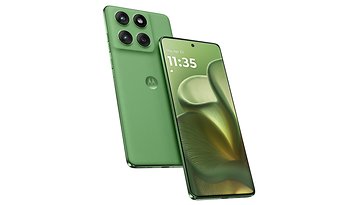Samsung patents a folding gaming smartphone


Nowadays, flexible technology seems to be the real breakthrough in the smartphone industry. The evidence is provided by the fact that more and more manufacturers have registered patents for folding devices and, of some of them have also made rather plausible renderings. This time it's Samsung's turn, take a look...
Thanks to the work of our colleagues at LetsGoDigital, today we are able to show you another folding smartphone from Samsung. Of course, the device looks completely different from what we saw (or rather, glimpse) at last year's developer conference, because during the SDC 2018, Samsung showed it from a distance for a very short time, protected by a special cover that concealed much of the design.

In the newly published images, you can get a small preview of how the device will look like. Clearly, we would like to point out that these are not real images, but patents filed by Samsung yesterday.
In addition to showing part of its appearance, in this case, the folding smartphone is dedicated to a niche that has not yet been discussed for foldable phones, namely ones dedicated to gaming. Once folded, the device would have another small folding part of the screen where you would place game buttons including arrow keys and six other small action buttons.

In any case, the design shown in the latter render reflects more or less what the same author had already shown during the month of November of last year, rebuilding the device on the basis of the information declared by Samsung itself during the SDC. On that occasion, we were able to learn from the company itself that the folding smartphone will have two thin screens. At the front there will be a smaller 4.6-inch display with a resolution of 840 x 1960 pixels, while once opened, the device will show a beautiful flexible 7.3-inch AMOLED panel with QXGA+ resolution (1536 × 2152 pixels).


It is clear that the display mode in the latter case will be dedicated to tablets, so you can take advantage of the large screen. Also, thanks to the information provided by Google's development department, we know for sure that several apps can be opened next to each other, no longer creating a classic multi-window, but real multitasking. Moreover, according to the information provided by Samsung, the panel will not be protected by glass, but by a particular transparent plastic, which was easily imaginable since Corning has recently reported that it is not ready for mass production of its Gorilla Glass flexible.

Another thing that can be assumed, but is certainly not yet certain, is the "hinge" that will handle the folding of the display. Samsung spent time and money developing the right display and interface for the purpose, but the hinge is also a very important aspect of the user experience. A folding smartphone must be able to be folded several times without being damaged. We don't know what kind of solution will be adopted by the South Korean company, especially since there are many patents registered in this regard, and it is on these that the 3D renderings are based.
Overall, these renderings suggest that we could perhaps change our minds about this new category of devices, especially as the first example we were able to see at CES 2019 in Las Vegas (Royole FlexPai) did not convey very positive feelings.
Would you be satisfied with Samsung's work if these renderings turned out to be close to the real thing?
Source: LetsGoDigital



















